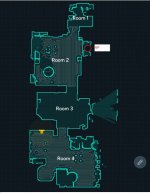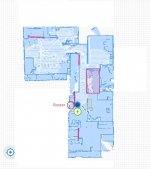I'm using ac68p and ac86u (primary). I first started with the ac86u only. I don't recall seeing as much problem with just 1 primary router. However it has many dead spots in the house and the signal is too weak in some areas hence why I started adding more nodes.
How willing are you to experiment?
It's a random "hail mary pass" or "shot in the dark" type of experiment, but :
just ordered a new dedicated firewall hardware If you are planning to re-use the AC86U as Access Point, Asuswrt doesn't have VLAN's support and you'll lose Guest Network option. It is actually available in AP Mode GUI, but it doesn't separate Guest Network connected devices from your main network.

www.snbforums.com
maybe jumbo frames might help the backhaul connection between the main router (AC86) and mesh node (ac68), if the cable between them meets Cat5e or higher. If it does, maybe any wireless bottleneck might open up. And then if it does, add the mesh nodes you've removed back into the mix, but reduce each of their Tx Power adjustment (if that's possible: Advanced Settings - Wireless - Professional) from "Performance" to "Good" or "Balance" or even "Fair".
My supposition is in two parts: that many of your wireless clients are having a difficult time deciding which Access Point to connect to, and they may often be blasting radio frequency energy out to reach the one they might think (incorrectly, possibly) is the best - all that energy from some clients might be interfering with the rest. putting more APs as you did, all at full power, seems to have only made matters worse, which is possibly why you removed them. Ignoring the labels in this, consider each of the circles is the wireless bubble of each WAP/node:

my suggestion: make more "bubbles," then make them "smaller" so they don't overlap as much, and perhaps it might be easier for the clients to choose which to associate with, possibly opening up the airwaves for all of them. Then, if enabling jumbo frames makes even more room in LAN packets (the second part of my supposition, which you can test easily first), you might just smooth out the issues you're having.
this presumably would get the clients closer to fewer access points without sacrificing coverage, and transfers information to the router for use in the LAN more efficiently/effectively, and then out the WAN connection (if applicable).
Getting QoS happening would probably help as well for both uploads as well as downloads
If this makes enough sense for you to try it, and you get good/better results, I hope you'll let us know. I have faith in the technology, and that it is possible to configure it in ways to make life easier/better for everyone using it






